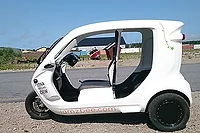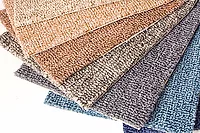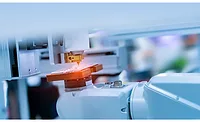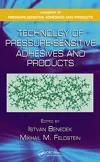Case Study: Advancing Automobiles with Adhesives
Scott Bader advanced materials are used in the prize-winning Hyundai Intrado


JEC Composites recently gave its JEC 2015 Jury Prize to Hyundai and chassis designer Axon Automotive (part of Far-UK Ltd.) for the Intrado hydrogen-powered crossover car. Two advanced composites materials developed by Scott Bader are used to manufacture the super-lightweight carbon fiber-reinforced plastic (CFRP) car chassis. The vacuum-infused chassis components for this concept vehicle use Axon Automotive’s innovative Axontex™ structural beam technology, which has Crestapol® 1250LV as the specified high-performance acrylic thermoset resin.
All of the chassis and frame CFRP components are robotically bonded together by Axon using Crestabond® M1-20 primerless structural adhesive, with no mechanical fixings needed. The result is an automotive chassis with the strength and stiffness of a similar steel structure, but with a 70% savings in the overall chassis weight.
This latest JEC prize is not the first that Axon Automotive and Scott Bader have received for this technology. In 2012, Axon received a JEC Automotive Innovation European Composites Award for its “B” size city concept car with its Axontex composite frame, weighing just 50 kg. In addition, Scott Bader received a JEC Partnership award as Axon’s high-performance resin supplier.
Patented CFRP Technology
The internationally patented Axontex structural beam technology has a 3D woven structure, which comprises a carbon fiber braid over machine-laid multiple preforms made of closed-cell low-density polyethylene (LDPE) foam. Crestapol 1250LV resin is then infused by vacuum-assisted resin transfer molding (VARTM) around the carbon fibers and LDPE preforms; the carbon fiber specified is Hyosung’s Tansome® H2550-12K high-strength grade. During the VARTM process, the LPDE foam expands and takes the shape of the tool, creating the unique internal structure with shear webs that is at the heart of this super-lightweight carbon fiber composite system.
The combination of the superior mechanical properties of Crestapol 1250LV resin with the Axontex technology’s internal web configuration produces molded CFRP chassis parts that are very lightweight, yet provide the high stiffness and mechanical strength properties needed for this type of vehicle. An ultimate tensile strength (UTS) of 900-1000 MPa (to BS 2282 Part 4), combined with a heat deflection temperature (HDT) of over 130°C, have been consistently recorded during extensive testing of this composite system. A specific automotive-related test is the seat belt load test according to ECE regulation 14, which the Axontex system passes, resisting up to 1350 daN ± 20 daN per attachment.
Technical Collaboration
First unveiled in 2014 at the Geneva Motor Show, the Intrado is still at the concept stage; thus, the chassis is manufactured for Hyundai in the UK by Axon Automotive Ltd. at its factory in Northamptonshire, where it molds and assembles the CFRP chassis to Hyundai-agreed specifications. For more than two years, the Axon team has worked with Hyundai’s European Technical Centre, Scott Bader’s technical teams, and the two key carbon fiber supplier partners (Hyosung Corp. and Lotte Chemicals) to develop the exact design specifications needed for the chassis and frame of this crossover vehicle.
A key objective set by Hyundai was to achieve the lightest weight possible for the final assembled chassis and frame of the Intrado; this is to maximize the range and performance of the zero-emissions, hydrogen-powered vehicle. “Significant additional weight savings were achieved in the final assembled chassis by being able to bond all the sections together,” said Kevin Lindsey, Ph.D., technical director for Axon Automotive and Far-UK. “The Crestabond structural adhesive has an ideal combination of high loadbearing adhesion strength, with flexibility, toughness and high impact resistance, even at low ambient temperatures.”
Robotic Adhesive Application
Assembling the CFRP chassis, including bonding in a number of steel and aluminum brackets, required the Crestabond adhesive to be precisely applied by Axon using an in-house robotic system in combination with a bulk dispenser and pneumatic gun. Axon has found that using a robotic application system for the adhesive consistently provides the level of quality needed, with precise control of the application, as well as being more cost effective. Using this approach provides OEMs with acceptable levels of productivity for medium- to high-volume automotive production.
Design Flexibility
For automotive engineers, the Axontex CFRP beam system offers enormous design flexibility, since it is suitable for manufacturing both straight and curved structural and load bearing parts, with no size restrictions. This innovative carbon fiber composite system provides lightweight parts with exceptional strength and torsional stiffness, plus a high resistance to deformation and bucking.
The Axontex system is ideally suited for a vehicle frame, which needs both rigidity and high impact crash resistance performance. In addition, this system has undergone another significant road safety structural test: the specific energy absorption (SEA) test. SEA is a measure of the ability of a material to absorb energy from a crash impact loading. The Axontex composite system can provide up to 1.5 times the SEA of aircraft-grade aluminum.
High-Performance Rapid-Cure Resin
Crestapol 1250LV is an ambient temperature curing urethane acrylate-based thermosetting resin that is compatible with carbon fibers. It was developed by Scott Bader specifically for producing high-performance carbon fiber-reinforced (CFRP) and glass fiber (GRP) parts by vacuum infusion, resin transfer molding (RTM), or any closed mold process. The resin provides a cost-effective alternative to epoxy infusion resin systems.
Most composite parts made from the resin are used in service after manufacture at ambient temperature without needing any post curing. However, to achieve even higher levels of temperature and mechanical performance that may be required by a specific end application, various post-cure regimes can be used. Scott Bader has several Crestapol closed mold and pultrusion application projects ongoing around the world in a number of high-performance markets, including automotive, marine, building and construction, rail, and oil and gas extraction.
For more information, visit www.scottbader.com. Hyundai can be found at http://worldwide.hyundai.com; Axon Automotive’s website is www.axonautomotive.com.
Looking for a reprint of this article?
From high-res PDFs to custom plaques, order your copy today!








